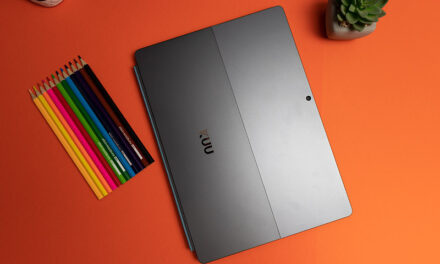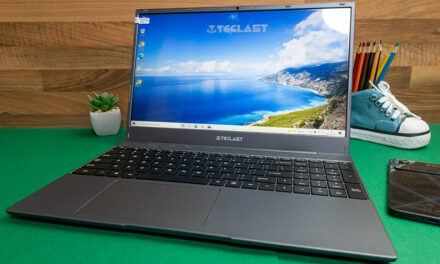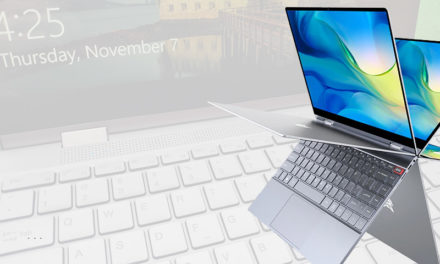
We tried: Toshiba Z830, a real gift
Before presenting the results of the measurements, let's see a more detailed specification!
| Processor | Intel® Core ™ i5-2467M processor for Ultrabook ™ computers with Intel® Turbo Boost 2.0 technology, clock speed: 1,60 / 2,30 Turbo GHz |
| Operating System | Windows® 7 Home Premium (64-bit edition, pre-installed with Toshiba Hard Disk Recovery) |
| System memory | DDR3 RAM (1333 MHz), 4096 (2048 on the motherboard + 2048) MB, up to 6144 MB |
| SSD drive | 128 GB |
| Display | 33,8 cm (13,3 ″), Anti-glare, high-brightness Toshiba HD display 16: 9, with LED backlight, resolution: 1366 x 768 pixels |
| Video card | Intel® HD Graphics 3000, up to 1696 MB shared memory with 4 GB installed system memory (for pre-installed 64-bit operating system) |
| External display modes | maximum resolution: 2048 x 1536, maximum refresh rate: 100 Hz, progressive resolution with maximum refresh rate: 1,600 x 1,200 |
| Csatlakozók | 1 × DC input 1 × external monitor 1 x RJ-45 1 × external microphone 1 × built-in microphone 1 × stereo headphones; 1 × built-in 1,3 megapixel webcam with AutoMacro support 1 × HDMI, 1080p signal format support 1 × SD ™ card reader (for up to 2 GB SD ™, 2 GB miniSD micro / microSD ™ with adapter, 32 GB SDHC ™, 64 GB SDXC ™ and 2 GB MultiMedia Card ™ ) 1 (on the right) × USB 3,0 2 (rear) × USB 2.0 (left side supports Sleep-and-Charge USB technology) |
| Wireless data transmission | Atheros 802.11b / g / n Bluetooth® 3.0 + HS 3G mobile broadband (Ericsson F5321gw), UMTS / HSPA (2100 MHz) and quad-band GSM / GPRS / EDGE (850/900/1800/1900 MHz) |
| Wired data transmission | Gigabit Ethernet LAN |
| Sound system | 24-bit stereo speakers: built-in stereo speakers |
| Keyboard | Matte black keyboard with full size backlit keys |
| Pointing device | A multi-touch touchpad that supports two-finger scrolling, pinching, flipping, and rotating. Your computer also has a separate power button for the TouchPad. |
| Battery | lithium ion, 8 cell |
| Size and weight | W x H x M: 316,0 x 227,0 x 8,3 (front) / 15,9 (rear) mm weight: min. 1,12 kg |
| Bundled software | Connectivity Doctor Toshiba Bluetooth ™ Stack Toshiba User's Guide Toshiba Assist Chicony camera management software Toshiba Face Recognition Toshiba Value Pack (Toshiba Power Saver, Toshiba Zooming Utility, Toshiba PC Diagnostic Tool, Toshiba Flash Cards, Toshiba Components Common Driver, Toshiba Accessibility, Toshiba Button Support) McAfee® Internet Security (free online upgrade for 30 days) Toshiba Recovery Media Creator Nero BackItUp and Burn Autobackup Essentials Skype or Whatsapp eBay Amazon Your computer has a limited-featured version of Microsoft® Word and Microsoft® Excel that contains advertisements. To activate a full-featured package preinstalled on your computer, purchase the Microsoft® Office 2010 suite. Nero Multimedia Suite 10 Essential Toshiba Security Assist ConfigFree ™ Toshiba utilities and device drivers Windows Live Essentials |
| Special services | Quick interface with 2 control buttons (Eco Utility button, Toshiba presentation button) SM BIOS compatibility HD Audio support ENERGY STAR 5.0 qualified computer Enhanced Intel® SpeedStep® technology |
For the measurements we chose from our usual test programs. We also deployed AIDA64, Cinebench, and SuperPI, and measured the performance of the SSD used as mass storage with AS SSD Bench in addition to AIDA.

After identifying the CPU and the chipset, follow the values of the battery life measured by us! Three modes were measured. The first is the operating time under minimum load, where except that the machine was turned on, nothing was essentially used. The second is the time measured during normal use. In this case, we surfed the internet, looked at pictures, had a little Youtube and word processing, turned on the wireless network, walked with him in the apartment (we didn’t take him where the king was on foot). The third is the operating time measured under full load. The load was done by AIDA64 instead of us, essentially the machine was at its peak. Let's see!
| Minimum load (WIFI off) | 9 hours 31 minutes |
| Normal usage, internet, word processing (WIFI on) | 4 hours 9 minutes |
| Full load (stress test + WIFI on) | 1 hours 42 minutes |
The results show that Toshiba has promised 8+ hours of operation, true only if we don’t touch the machine. However, we have no reason to complain either, as four hours is not enough with average use. And then almost 2 hours under full load can be said to be quite good, as we will not be very exposed to such loads, yet, it worked for us for one and three quarters of an hour.


The following table shows the built-in measurement programs of AIDA64 and the numbers of other measurement programs known and used by us. Since the machine was not compared to any other structure, creating a graph was unnecessary, but if anyone wanted to compare it to the results of other configurations, simply scroll back through the hardware tests.
| AIDA64 CPU Queen | 13996 |
| AIDA64 Photoworxx | 16732 |
| AIDA64 Hash | 727 |
| AIDA64 FPU VP8 | 1114 |
| AIDA64 FPU Julia | 5243 |
| Cinebench (2 cores + HT) | 1,91 |
| Super PI 1MB | 17,789 s |
| Super PI 32MB | 922,649 s |
As you can see from the results, the machine did not come as a big surprise. The benefits of using an SSD are obvious, but you don't even need any measurement software to recognize it, just turn on the machine. AIDA64’s built-in measurement programs, and indeed all measurements, brought the expected results, which shows that we can’t talk about a powerhouse, but no one will think of an Ultrabook to produce Pixar-quality animation on it, since it wasn’t invented for that.
It is much more important for such a portable machine to have battery life and to provide balanced performance with the applications we use day in and day out. Well, the battery life is long enough, even to get the speed of a healthy mid-range notebook instead of netbooks tested 2-3 years ago.
Let's evaluate!
















